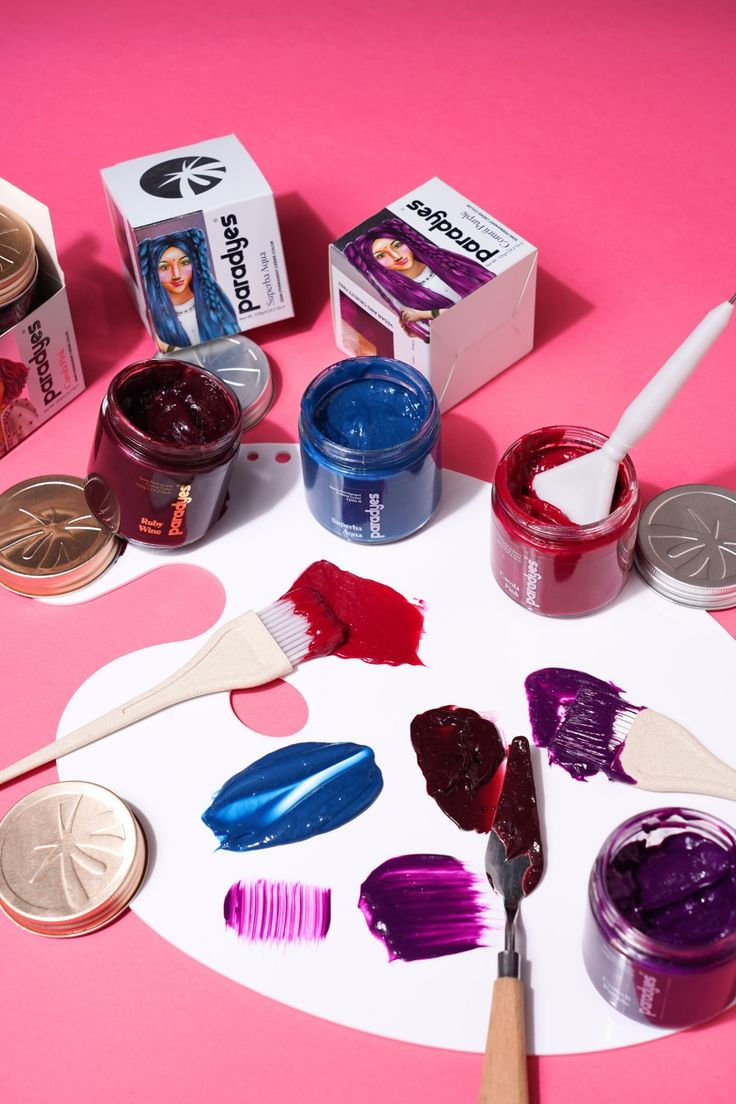Paradyes: A successful case study of community building
- Suramya Design
- Aug 25
- 3 min read
Updated: Sep 16

At Suramya, we’re always observing how brands shape culture through design and storytelling.
One brand that really stood out to us is Paradyes, the semi-permanent hair colour brand that turned a simple gap in the Indian market into a full-blown movement.
This is where branding goes beyond selling—it creates culture, community, and conversation.”
Spotting the Gap
For years, hair colour in India was boxed into one category: hiding greys or getting salon-style browns. That’s it. No space for self-expression, no safe options for playful colours.
Globally, brands like Manic Panic and Arctic Fox were already cult favourites among the youth for their neon and pastel shades. But in India? There were not much variations in the market.
Most homegrown players were stuck on traditional tones or harsh, chemical-heavy formulas. None were speaking to the young Indian who wanted vibrant, safe, semi-permanent colours, without the commitment or damage.
Paradyes spotted that cultural and product gap. They realised that the customers need. And instead of just selling colours, they branded themselves as the voice of self-expression.
A Founder Who Became the First Customer & Content Creator
What sets Paradyes apart is how personal the brand feels. Yushika Jolly, the founder, didn’t stay behind the scenes. She coloured her own hair, experimented, and became the brand’s first ambassador.
Founder led brands make you believe in the products. When a founder lives the brand, it instantly feels more real.
Paradyes didn’t need a polished celebrity face at the start, they had authenticity that brought more people in.
Customer Generated Content & Listening to the community
Paradyes leaned on something bigger than campaigns: its community. Every transformation reel, every selfie, every customer’s “before and after” became part of the branding.
When real people proudly show off your product, it’s louder than any ad campaign. Paradyes let its users carry the brand forward, making their audience co-creators of the brand identity.
This not only helped their sales but it also helped them asses what worked and what didn’t and why.
Branding That Fits Today’s Culture
From their Instagram feed to their packaging, everything about Paradyes was aligned with the Gen Z culture. Bright, playful, meme-worthy, and bold.
They weren’t just selling colour in a bottle. They were selling identity, rebellion, and confidence.
And that’s exactly what today’s generation looks for….brands that don’t just sell products but stand for something bigger.
The Emotional Hook
Traditionally in India, coloured hair was seen as “too much” or “rebellious.” Paradyes reframed that. They positioned it as self-expression, creativity, and individuality.
That emotional connection is the most powerful tool in a brand’s arsenal.
Key Take Aways From Paradyes
If you are building a brand. Here’s what you can learn from Paradyes:
When the founder is part of the story, the brand feels authentic and connects better. Be the face of your brand.
Community is branding. Your customers can be your strongest marketers. Listen to them and engage them.
Spotting a cultural and market gap is as important as the product itself.
Design consistency — from packaging to social media — makes the story unforgettable.
Emotional connection wins. Paradyes didn’t sell hair colour; they sold identity.
From packaging to presence, we build brands that connect, inspire, and convert. Let’s make your brand the next success story.
All product images and brand assets used in this article belong to Paradyes and are used here for case study and educational purposes only.
Have a project?





Comments